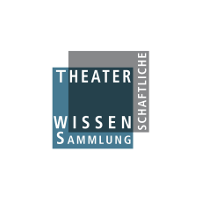Cologne, or Köln in German, is Germany’s fourth largest city with more than one million inhabitants. It is the economic and cultural centre of the larger Rheinland metropolitan area, closely connected to the neighboring cities of Aachen, Bonn, or Düsseldorf (all within the reach of a 45 minute/ one hour train ride). Being the largest city of the state of North Rhine-Westphalia, Cologne also has close ties to the metropolitan region of the Ruhr-area and its major cities Bochum, Dortmund, and Essen.
Cologne is one of the oldest cities northern of the Alpes. Various historical layers amalgamate in the city’s profile: Traces of the Roman past are still visible in the city and lie so closely under the surface that every construction site has an archaeological dimension to it. In the Middle Ages, Cologne became a center for pilgrims who sought the relics of the Three Magi – whose shrine is at the heart of its famous cathedral that dominates the veduta. As a hub for commerce and trade as well as an important nodal point for traffic on the river Rhine, Cologne prospered.
Cologne is not only geographically close to present-day Belgium and the Netherlands as well as France – becoming a French city in 1794 when revolutionary troops occupied the city and made it part of the French revolutionary republic. The famous signet of 4711 was the house number given by the French administration to a perfumer, specializing in a product later became »Kölsch Wasser«. (Though, that is not the original one but that’s a story for another time…)
The nineteenth-century urbanization turned Cologne into one of Germany’s largest cities. During World War II the city was almost entirely destroyed and underwent an intensive period of re-construction after 1945.
Although, or maybe because it was not a political centre in post-War Western Germany, Cologne became a cultural hub of the Bonn Republic. Especially in the 1960s-1980s it was closely connected to the rise of contemporary art and performance culture as well as contemporary opera. Its rich landscape of museums, festivals, galleries, theatres, clubs and performance venues is testament to this vibrant history and present, attracting artists, musicians and writers such as Heinrich Böll (1917-1985; Nobel Prize for Literature, 1972), an exemplary figure of post-war culture.
Known for its sense of citizenship and hospitality, the city pursues a mission for inclusivity and diversity. It has a lively multi-cultural scene that is visible and experienceable in many cultural initiatives such as the Akademie der Künste der Welt (https://www.adkdw.org/en/). Cologne has also been a an important supporter of the LGBTQAI+-movement and held one of the first Gay Pride-events in Germany in 1979. Today, Cologne is known to be one of the queer-friendliest cities in Europe.
One of the hallmarks of Cologne’s cultural life is the annual Carnival that captures the entire city – starting on November 11 at 11 o'clock 11 and 11 seconds and – with an intermission for Christmas – lasts until Ash Wednesday. At the heart of the celebrations are the various parades and pageants, culminating in the Rosenmontag procession with its 12,000 participants, which attracts around 1.5 million spectators from all over the world. Apart from the merry and joyful celebration of music and costumes, the parades exhibit extravagant floats depicting critical figurations of contemporary political and social developments. Far from just being the preserve of traditional guilds and associations, carnival provides an opportunity for various alternative groups to articulate and make themselves visible in the city's colourful fabric.
